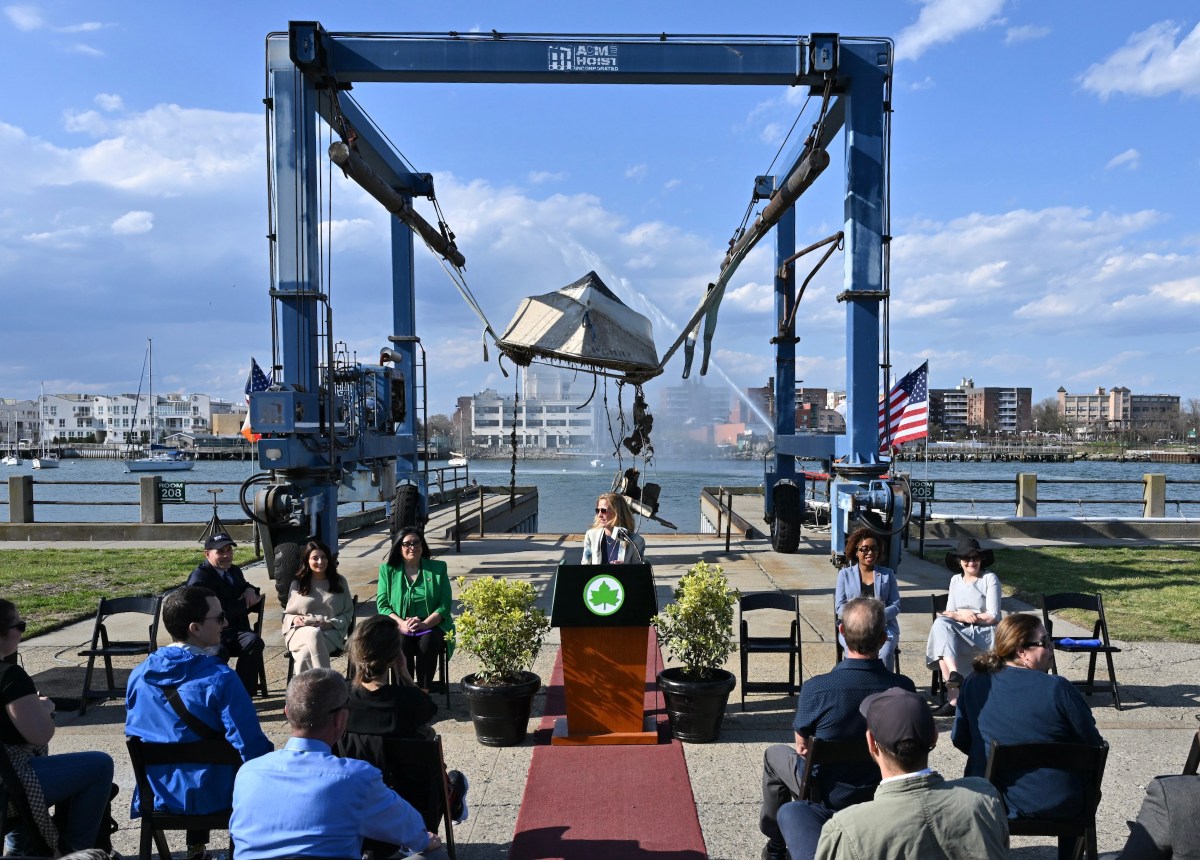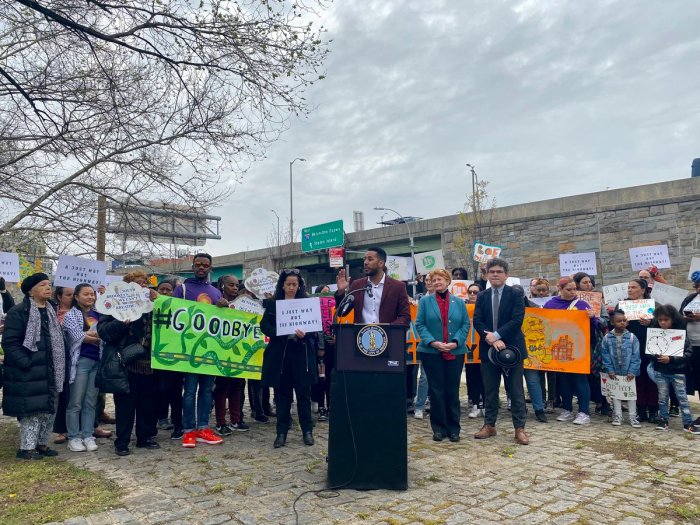C train riders will be the first to experience the brand new R211 “open gangway” subway cars, which entered passenger service on the Washington Heights-to-East New York local line on Thursday.
Two 8-car sets of R211Ts entered revenue service on the C line as the MTA gauges rider reaction and works out operational kinks ahead of a larger rollout of the modern cars, Gov. Kathy Hochul and MTA chief Janno Lieber said Thursday at a press conference from the C’s northern terminus in Washington Heights.
Regular R211s, with fully separated cars like typical subway trains, are already in service on the A line, and are intended to eventually replace the subway’s oldest rolling stock models dating back to the 1970s.
What’s different about the R211T — which Hochul described as “the future of transportation” — is what’s between the cars: the open gangway is an accordion-like apparatus similar to that seen on an articulated bus, allowing passengers to freely move between cars at any time during their trip. On traditional trains, moving between cars can be dangerous and potentially fatal.
Hochul said that “psychologically,” the open gangways give riders more breathing room to make decisions about their commute, particularly the car they travel in.
“You make a quick decision, which car am I gonna go in, it’s a split decision. And you may think it’s more crowded than I thought, something’s bothering me about this one, I’m not real excited about it,” said Hochul. “So it allows people to make that decision on your own, you’re not trapped and confined and conscribed to your first decision, you have more options. So I think psychologically, it just improves the experience for the riders overall.”
R211T features
The R211T is the first train car with an open gangway to ever enter revenue service in North America, Hochul said. The open gangway concept, which is in practice in many cities around the world, also allows trains to hold additional passenger capacity.
They’re also built with technology for modern communications-based train control (CBTC) signaling technology, which is slowly replacing Great Depression-era analog signaling in the system and provides precise location data of trains, allowing the MTA to run more trains spaced more closely.
NYPD Transit Chief Michael Kemper also said he thinks the new trains are safer: since there’s no area between train cars, unruly teens cannot maneuver outside and atop the carriage for subway surfing.
The debut of the R211T follows a long and troubled development, with billions of dollars spent. The MTA first showcased the new cars to New Yorkers all the way back in 2017, and early in 2018 the MTA inked a contract with Japanese conglomerate Kawasaki to produce the new cars. The contract for the first 535 cars was worth $1.4 billion, about $2.6 million apiece.
Back in those halcyon days, commuters were told the R211 would be on the subway tracks for testing by 2020. The COVID-19 pandemic put a stop to that, but further delays were caused by production and supply chain issues at Kawasaki’s plant in Nebraska. The R211 finally got on the rails in March of last year when it debuted on the A line. A larger-scale rollout is not expected until at least next year.
The R211 will replace the R44, in service in 1972 and currently used on the Staten Island Railway, as well as the larger R46 class, which entered service in 1975. The R46 is still used on “B Division” lines such as the A, C, N, Q, and W trains.

Lieber, the MTA chair and CEO, expects the R211 debut will be welcomed by long-suffering C train riders. In December, on-time performance for the C was just 69%, ten points below the systemwide average.
“The C train needs to get a lot better, we all know that,” said Lieber. “They do need to get better and they do need more service.”
The lower Manhattan portion of the C is in the process of being resignaled with CBTC. Resignaling efforts on the Brooklyn segment of the line are in limbo, however, due to the multiple federal lawsuits attempting to overturn congestion pricing.


















